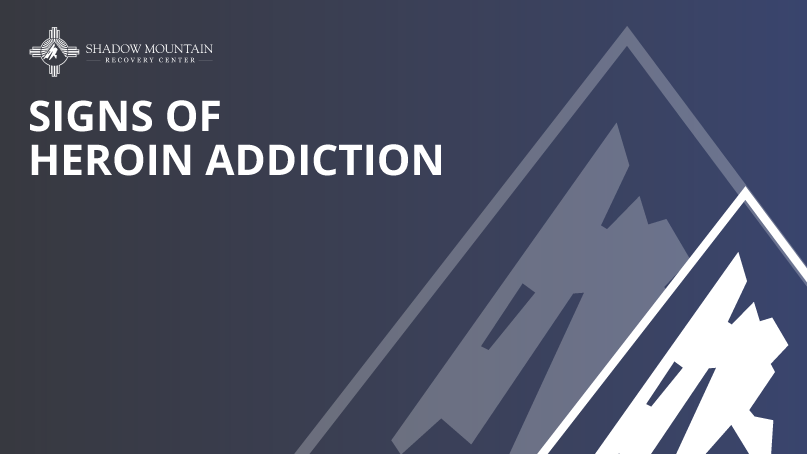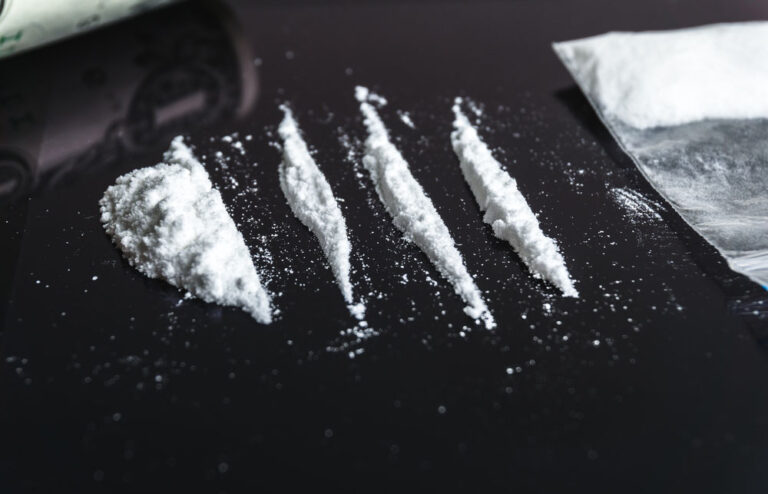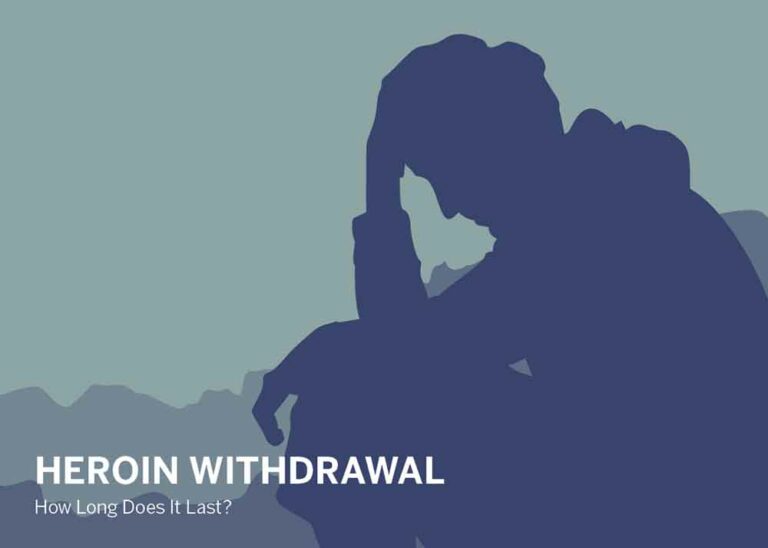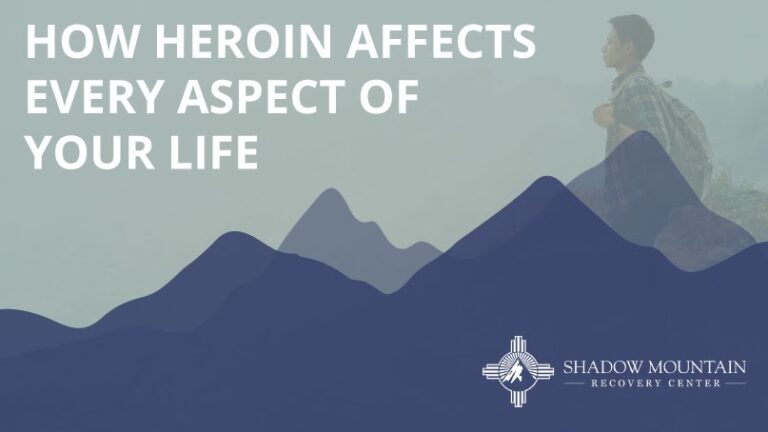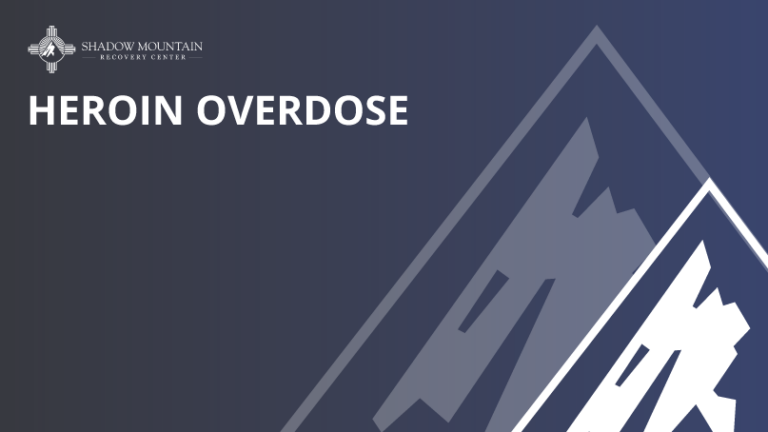Signs of Heroin Addiction
In 2020, overdose deaths in New Mexico reached an all-time high. Opioids such as heroin significantly contributed to this tragic loss of life. Heroin comes from morphine, which is found in the seed pod of opium poppy plants. These plants are commonly grown in Southeast and Southwest Asia, Columbia, and Mexico. Opioids such as heroin interact with opioid receptors on nerve cells in a person’s nervous system. Heroin produces euphoric effects, so it’s commonly misused. While heroin use can be challenging to overcome, heroin overdose treatment can help you start the path to recovery.
Physical Symptoms of Heroin Addiction
Individuals who use heroin can develop various medical complications, including insomnia and constipation. Respiratory issues are also common for those who use heroin. Men who use heroin often experience sexual dysfunction. Similarly, heroin can disrupt the menstrual cycles of women. How a person uses heroin can also impact the side effects heroin has on the body. For example, snorting heroin can cause damage to the mucosal tissues in the nose and nasal septum.
Regularly using heroin via injection can cause scarred veins, collapsed veins, bacterial infections of the blood vessels and heart valves, abscesses, and other soft-tissue infections. Sometimes heroin contains additives that do not dissolve well in a person’s bloodstream. This results in clogging of the blood vessels. Therefore, these additives can cause infection and possibly the death of cells in vital organs. Arthritis or other rheumatologic problems can be the result of immune reactions to these contaminants.
Additional symptoms of heroin use are:
- Collapsed veins
- Insomnia
- Infections in heart valves and lining
- Skin infections
- Kidney disease
- Liver disease
- Lung disease
Health Consequences
Individuals who use heroin sometimes share needles used to inject heroin. This puts individuals at risk for bloodborne illnesses, such as Hepatitis B, Hepatitis C, and HIV. Needle exchange programs help reduce the risk of transmission. They provide unused needles so those who use intravenous substances can do so without the risk of transmitting these illnesses.
Psychological Signs of Heroin Addiction
Long-term heroin use creates changes to the structure and physiology of the brain. This creates long-term imbalances in a person’s neuronal and hormonal systems that may take a significant amount of time to reverse. The brain can heal itself, but this healing, unfortunately, does not happen overnight. Deterioration of the brain’s white matter due to heroin use reduces a person’s decision-making abilities and ability to regulate behavior and respond to stressful situations.
Risk Factors of Heroin Addiction
There are plenty of myths about the causes of a heroin use disorder. No single factor will make a person develop substance use. Substance use is complex, and often, several risk factors will lead a person to heroin use. A risk factor is a factor that increases the likelihood a person will use heroin. One example of a risk factor for heroin use is family history. Those with family members who use heroin are more likely to use heroin or other substances. However, having a family history of heroin use disorder doesn’t mean someone will use heroin. not. Other risk factors include:
- A mental health disorder
- Lack of support
- Peer pressure
- Substance use at a young age
- Substance use in peer group
The Dangers of Heroin
Heroin causes many health issues in the heart, lungs, liver, skin, and kidneys. Over time, the health issues can be fatal. Heroin overdose is also a danger of heroin use. An overdose is when someone takes too much of a substance and it causes life-threatening conditions.
CALL US TODAY TO LEARN MORE ABOUT OUR DETOX TREATMENT CENTERS
__CONFIG_colors_palette__{“active_palette”:0,”config”:{“colors”:{“62516”:{“name”:”Main Accent”,”parent”:-1}},”gradients”:[]},”palettes”:[{“name”:”Default Palette”,”value”:{“colors”:{“62516”:{“val”:”rgb(166, 3, 3)”,”hsl”:{“h”:0,”s”:0.96,”l”:0.33}}},”gradients”:[]}}]}__CONFIG_colors_palette__ Call Today
Recognizing Heroin Use in Teenagers
Unfortunately, teenagers are not immune to the risk factors contributing to heroin use. The Oregon Health Authority shares that it is common for substance use issues to develop before a person turns 18.
If your adolescent child is using heroin or another substance, know this does not make them bad, and it does not mean you have failed as a parent. Many underlying factors contribute to substance use disorders. Often, healing can be found after these factors are addressed. There are many signs parents should be aware of if they suspect their child has started using heroin.
Behavioral changes are a significant red flag associated with heroin use among teenagers. Examples of behavior changes are if they suddenly are getting in trouble at school, or neglecting responsibilities or homework when this was not an issue in the past. Another example is becoming more withdrawn when they were once outgoing. If your child’s peer group changes suddenly and they don’t have an interest in being with people who were once significant, it may be because they are spending time with a peer group involved with substance use.
If your teenager suddenly needs money, it could be because they are using the money for heroin. At around $80 per gram, a heroin habit can become very expensive, even though it is considered one of the more low-cost illicit substances.
Teenagers who use needles to inject heroin may start wearing long sleeves, even when it is warm outside—this practice hides the marks on their arms resulting from heroin use.
Some teenagers struggle with their hygiene because of heroin use.
Searching for Heroin
If you feel the need to look through your child’s belongings for evidence of heroin use, these are some things to keep in mind:
- Check small spaces such as makeup bags or pencil cases
- It is common to hide substances in the dirt of a houseplant
- Books can be used to hide substances
- Check over-the-counter medication containers
- Empty candy bags can be used to hide heroin
- Fake soda cans or other fake containers are often used to conceal heroin or other substances
Heroin and Drug Paraphernalia
Heroin can be ingested in many different ways. There are a few items to look for if you are wondering if your child may be involved in heroin use.
If your child may be injecting heroin be sure to look out for:
- Hypodermic needles for injecting heroin
- Cotton balls are used to strain impurities from liquid heroin
- Spoons used to melt heroin into a liquid form
- A tie-off, which can be a shoelace or any string-like object, used to restrict blood flow.
- A lighter which can be used to melt heroin into a liquid form
Objects associated with smoking heroin include:
- Aluminum foil, which contains heroin while it is smoked
- A Lighter
- Straws, which are used to inhale heroin smoke
- A pipe or rolling papers
Individuals who snort heroin often use rolled-up money or straws to ingest the heroin.
What Should I Do if Someone I Know Needs Help With Heroin Use Disorder?
If you know someone who needs help with heroin use disorder, know that around 75% of those who struggle with a substance use disorder recover! There is hope for them to achieve healing.
The first step in treatment for heroin is a 4 to 7-day detox. Detox is a period spent at a treatment center where a person receives treatment while they experience withdrawal symptoms. These symptoms happen as a result of ending heroin use and include agitation, diarrhea, bone pain, and muscle pain. Detox in a treatment facility greatly restricts a person’s access to heroin and gives them access to treatment for their withdrawal symptoms. Having access to care during withdrawal symptoms can increase the likelihood of overcoming this difficult step in recovery.
After heroin addiction detox treatment, a person may need residential treatment to continue their recovery journey. During residential treatment, a person lives onsite at a treatment center to receive treatment for their heroin use. Treatments include receiving therapy, taking part in support groups, and education related to substance use and recovery. Residential treatment is often highly structured, which gives those in treatment a good foundation for their recovery journey. Sometimes, outpatient treatment is a better fit for a person’s treatment needs. Those who participate in outpatient treatment receive the same treatment as in residential treatment. The difference is that they live at home and travel to a treatment center for recovery treatment. Often, someone who has finished residential treatment will step down into an outpatient program to transition back into their everyday life.
Shadow Mountain provides life-saving treatments for individuals who are seeking recovery from heroin use or other substance use disorders. Our team is trained to utilize evidence-based practices that will help you achieve recovery. We know everyone needs an individualized plan, and we are passionate about creating treatments that will help you succeed! Call Shadow Mountain at 505-657-2117 to learn more about treatment options today!
FAQs About Heroin Addiction
What type of drug is heroin?
Heroin is an opioid. This is a substance that bonds with the opioid receptors in a person’s brain and produces pain relief and euphoria. Opioids are sometimes used in treatment for recovery from surgery or the management of chronic pain. Opioids have a high potential for misuse and should not be used without the supervision of a medical professional.
How does drug addiction affect the brain?
A substance use disorder, such as heroin use disorder, is a condition where a person will have great difficulty ending their substance use despite the negative impact it’s having on their life. Someone who has a substance use disorder will build a tolerance to the substance, meaning they will need more of the substance to get the same results. Also, substance use disorder affects how the brain works. It can contribute to mental illness and negatively affect cognitive function. The good news is that the brain can heal when substance use ends and many people recover their brain function.
What qualifies as an addiction?
Signs that you may have a substance use disorder, commonly called addiction, are cravings for substance use, needing more of the substance to get the same results, spending money on the substance whether or not you can afford it, not meeting obligations due to substance use, risky behavior while using the substance, finding it challenging to end substance use, and withdrawal symptoms when not using the substance.
How do you say no to drugs?
Saying no to substance use can be difficult. The best thing a person can do is cultivate a happy and healthy life where substance use does not feel necessary. This involves spending time with loved ones, finding hobbies that give you joy, staying physically healthy and active, and doing meaningful activities that give back to others. Also, it is important to get necessary mental health treatment due to the connection between mental health conditions and substance use.
[tcb-script type=”application/ld+json”]{ “@context”: “https://schema.org”, “@type”: “FAQPage”, “mainEntity”: [{ “@type”: “Question”, “name”: “What type of drug is heroin?”, “acceptedAnswer”: { “@type”: “Answer”, “text”: “Heroin is an opioid. This is a substance that bonds with the opioid receptors in a person’s brain and produces pain relief and euphoria. Opioids are sometimes used in treatment for recovery from surgery or the management of chronic pain. Opioids have a high potential for misuse and should not be used without the supervision of a medical professional.” } },{ “@type”: “Question”, “name”: “How does drug addiction affect the brain?”, “acceptedAnswer”: { “@type”: “Answer”, “text”: “A substance use disorder, such as heroin use disorder, is a condition where a person will have great difficulty ending their substance use despite the negative impact it’s having on their life. Someone who has a substance use disorder will build a tolerance to the substance, meaning they will need more of the substance to get the same results. Also, substance use disorder affects how the brain works. It can contribute to mental illness and negatively affect cognitive function. The good news is that the brain can heal when substance use ends and many people recover their brain function.” } },{ “@type”: “Question”, “name”: “What qualifies as an addiction?”, “acceptedAnswer”: { “@type”: “Answer”, “text”: “Signs that you may have a substance use disorder, commonly called addiction, are cravings for the substance, needing more of the substance to get the same results, spending money on the substance whether or not you can afford it, not meeting obligations due to substance use, risky behavior while using the substance, finding it challenging to end substance use, and withdrawal symptoms when not using the substance.” } },{ “@type”: “Question”, “name”: “How do you say no to drugs?”, “acceptedAnswer”: { “@type”: “Answer”, “text”: “Saying no to substance use can be difficult. The best thing a person can do is cultivate a happy and healthy life where substance use does not feel necessary. This involves spending time with loved ones, finding hobbies that give you joy, staying physically healthy and active, and doing meaningful activities that give back to others. Also, it is important to get necessary mental health treatment due to the connection between mental health conditions and substance use.” } }]}[/tcb-script]

